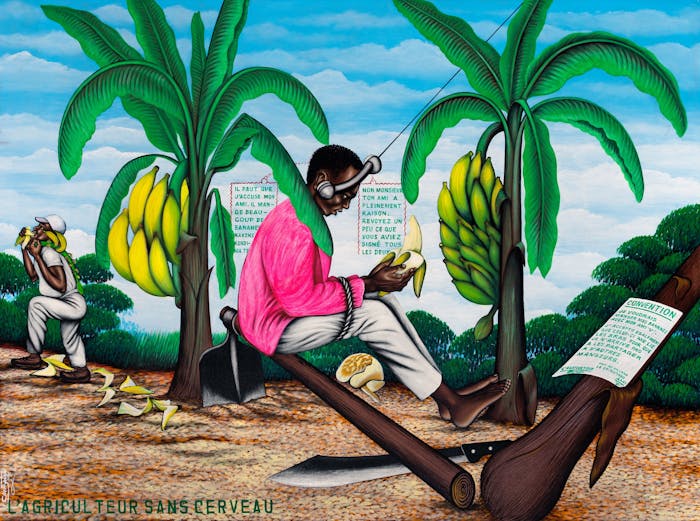This solo exhibition presents 50 paintings from the Pigozzi African Art Collection by Congolese artist Chéri Samba, who went by Samba wa Mbimba N’zingo Nuni Masi Ndo Mbasi until 1979. A key member of the Congolese ‘popular painting’ movement, he moved to Kinshasa in 1975 and began his painting career painting signs and billboards, but soon became known as a ‘painter-journalist’ since he chronicled everyday events. He calls his colourful self-portraits — that typically feature text bubbles written in Lingala, Kikongo and French — ‘bubble paintings’. Ever since his art was included in the groundbreaking exhibition ‘Magiciens de la Terre’ (1989), the entrepreneur and photographer Jean Pigozzi has collected his paintings.
This exhibition is divided into five themes: self-portraiture to reflect the world; the multifaceted woman; Kinshasa, Congo and Africa; geopolitical and art stories; and art history revised and corrected. The ‘performer-pioneer’ Samba, who unabashedly sought stardom, managed to power self-portraiture into a vehicle for self-promotion. Although Samba began depicting female nudes when many in Africa still considered such imagery taboo, his nudes exude agency, thus defying convention.
For nearly 50 years, he has maintained a studio in Kinshasa, the world’s largest French-speaking city (18 million inhabitants). It is from this vantage point that he deploys painting to critique Western art institutions, art history’s Western hegemony and global politics. Although his paintings are figurative, their distinctive caricature style, which is more literary than realist, owes a lot to his earlier career in comics — a field in which commentary trumps depiction.
